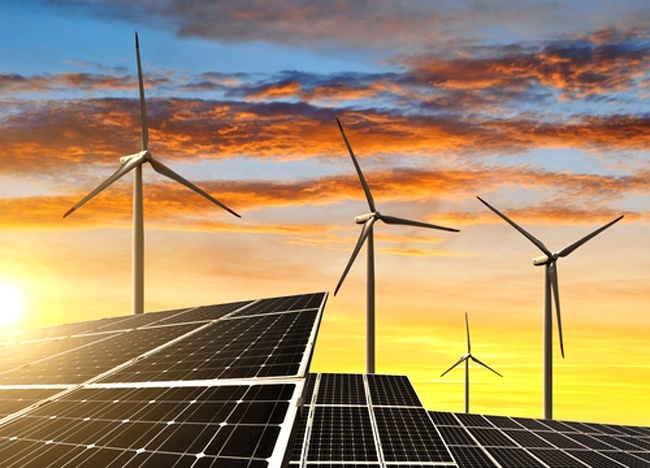
Renewable Energy
While many nations are taking steps toward energy independence, Aruba is diving in.
In 2012, the small island nation pledged to transition to 100 percent renewable energy within eight years.
Justin Locke is director of the island energy program at the Carbon War Room, an international nonprofit. He said it makes sense for islands to switch to clean power.
“Islands currently pay some of the highest electricity prices in the world. At the same time, they also have some of the best renewable energy resources,” added Locke.
Aruba’s plan includes building new solar and wind farms, converting waste to energy, and working to increase energy efficiency.
The country is also pursuing creative new strategies to reduce power demands. For example, the utility company is working to provide air conditioning using ice that is produced at night when electricity costs are lower.
“Islands provide an incredible blueprint, or guiding light, for what a renewable economy could look like from a technical, financial, and regulatory perspective, because they are actually moving in that direction now,” said Locke.
Today, Aruba gets nearly 40 percent of its energy from clean power and intends to reach 100 percent in several years.
Listen here:
Renewable energy is energy that is collected from renewable resources, which are naturally replenished on a human timescale, such as sunlight, wind, rain, tides, waves, and geothermal heat. Renewable energy often provides energy in four important areas: electricity generation, air and water heating/cooling, transportation, and rural (off-grid) energy services.
Based on REN21‘s 2016 report, renewables contributed 19.2% to humans’ global energy consumption and 23.7% to their generation of electricity in 2014 and 2015, respectively. This energy consumption is divided as 8.9% coming from traditional biomass, 4.2% as heat energy (modern biomass, geothermal and solar heat), 3.9% hydro electricity and 2.2% is electricity from wind, solar, geothermal, and biomass. Worldwide investments in renewable technologies amounted to more than US$286 billion in 2015, with countries like China and the United States heavily investing in wind, hydro, solar and biofuels. Globally, there are an estimated 7.7 million jobs associated with the renewable energy industries, with solar photovoltaics being the largest renewable employer. As of 2015 worldwide, more than half of all new electricity capacity installed was renewable.
Renewable energy resources exist over wide geographical areas, in contrast to other energy sources, which are concentrated in a limited number of countries. Rapid deployment of renewable energy and energy efficiency is resulting in significant energy security, climate change mitigation, and economic benefits. The results of a recent review of the literature concluded that as greenhouse gas (GHG) emitters begin to be held liable for damages resulting from GHG emissions resulting in climate change, a high value for liability mitigation would provide powerful incentives for deployment of renewable energy technologies. In international public opinion surveys there is strong support for promoting renewable sources such as solar power and wind power. At the national level, at least 30 nations around the world already have renewable energy contributing more than 20 percent of energy supply. National renewable energy markets are projected to continue to grow strongly in the coming decade and beyond. Some places and at least two countries, Iceland and Norway generate all their electricity using renewable energy already, and many other countries have the set a goal to reach 100% renewable energy in the future. For example, in Denmark the government decided to switch the total energy supply (electricity, mobility and heating/cooling) to 100% renewable energy by 2050.

 WhosGreenOnline.com Your Online Magazine and Directory for Green Business, Product, Service and News!
WhosGreenOnline.com Your Online Magazine and Directory for Green Business, Product, Service and News!

